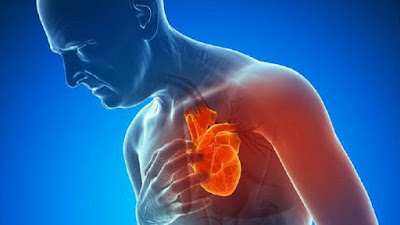14 Symptoms That Indicate You Have Very High High Blood Sugar Levels!
High blood sugar levels or hyperglycemia is a medical condition in which in the bloodstream there is excess of glucose. There are some early signs that indicate that your blood sugar levels are elevated.
Do you constantlyfeel hungry? Have you gained weight although you have cut the calorie intake? Do you frequently experience stomach issues? If the answer to these questions is YES, you possibly have high blood sugar symptoms.
It is very important to explain that even the healthy personsmight experience spikes in the blood sugar levels when they consume some foods, such as sodas, candyor cakes. However, in case your blood sugar levels stay high for more extended periods of time you have to be aware of the fact that it could lead to diabetes or some other severe health issue.
In order to take precautions on time, you have to be familiar with the high blood sugar symptoms and to recognize them once you start experiencing them more frequently. On that way you are going to manage to get the blood sugar under control.
What are the causes of high blood sugar symptoms?
There are numerous different factors that contribute to the high blood sugar symptoms, and the most common are the following:
What are the high blood sugar symptoms?
The medical experts explain that having high blood sugar does not automatically mean that you have diabetes. Namely, high blood sugar is a symptom of diabetes.
It is also important to mention that a patient who is experiencing hyperglycemia (high blood sugar) might have no symptoms at all.
However, here are some of the most common symptoms of high blood sugar:
Using Glycemic Index Food List to Decrease High Blood Sugar Symptoms
The Glycemic Index (GI) is system that ranks the foods on a scale (from 1 to 100) based on their effect on blood-sugar levels. Precisely, this numerical index measures the carbohydrates based on the rate of the glycemic response. That actually is extent to which foods are raising the blood sugar levels after eating them.
GI uses a scale from 0 to 100 and higher values are assigned to those foods that cause the most rapid rise of sugar levels in the blood. The pure glucose serves as a scale of 100.
The foods with a high GI are rapidly digested, while the low-GI foods are digested very slowly. The medical experts explain that all people have to consume low GI foods as they have plenty benefits for the overall health and in the same time reduce insulin levels and insulin resistance, thus prevent the high blood sugar symptoms.
It is very important to explain that even the healthy personsmight experience spikes in the blood sugar levels when they consume some foods, such as sodas, candyor cakes. However, in case your blood sugar levels stay high for more extended periods of time you have to be aware of the fact that it could lead to diabetes or some other severe health issue.
In order to take precautions on time, you have to be familiar with the high blood sugar symptoms and to recognize them once you start experiencing them more frequently. On that way you are going to manage to get the blood sugar under control.
What are the causes of high blood sugar symptoms?
There are numerous different factors that contribute to the high blood sugar symptoms, and the most common are the following:
- Lack of regular exercise
- Poor diet
- Stress
- Use of certain medications
- Some health conditions
What are the high blood sugar symptoms?
The medical experts explain that having high blood sugar does not automatically mean that you have diabetes. Namely, high blood sugar is a symptom of diabetes.
It is also important to mention that a patient who is experiencing hyperglycemia (high blood sugar) might have no symptoms at all.
However, here are some of the most common symptoms of high blood sugar:
- Dry mouth
- Blurred vision
- Increased thirst
- Dry and itchy skin
- Always being hungry
- Daily fatigue or extreme tiredness
- Frequent urination and/or urination during the night
- Slow healing of cuts and wounds
- Difficulty concentrating
- Excess abdominal fat/weight gain
- Impotence
- Nerve problems
- Stomach problems
- Recurrent infections
Using Glycemic Index Food List to Decrease High Blood Sugar Symptoms
The Glycemic Index (GI) is system that ranks the foods on a scale (from 1 to 100) based on their effect on blood-sugar levels. Precisely, this numerical index measures the carbohydrates based on the rate of the glycemic response. That actually is extent to which foods are raising the blood sugar levels after eating them.
GI uses a scale from 0 to 100 and higher values are assigned to those foods that cause the most rapid rise of sugar levels in the blood. The pure glucose serves as a scale of 100.
The foods with a high GI are rapidly digested, while the low-GI foods are digested very slowly. The medical experts explain that all people have to consume low GI foods as they have plenty benefits for the overall health and in the same time reduce insulin levels and insulin resistance, thus prevent the high blood sugar symptoms.



